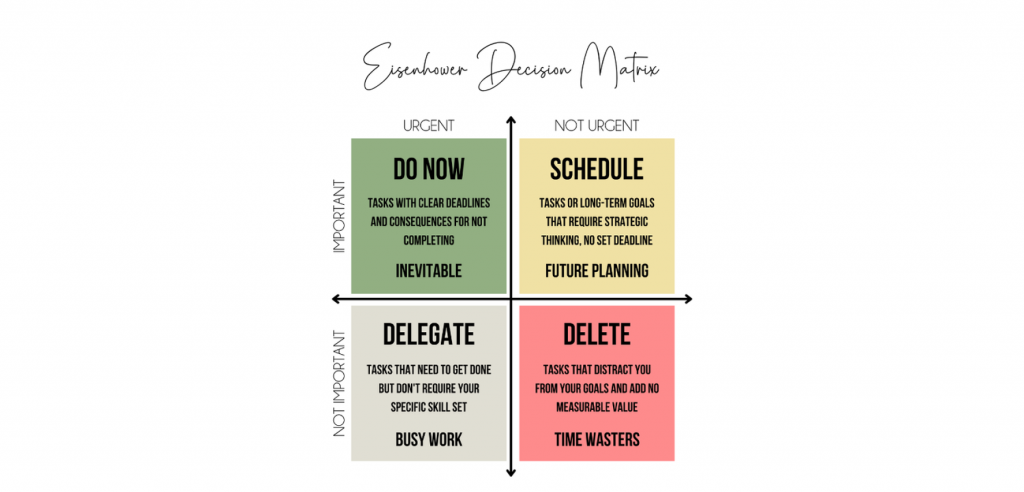
A survey by FMI found that around 89% of respondents faced owner-led project initiation delays in 2022.
In fact, the situation is even worse in some niche industries, like the construction sector. For example, a 2022 survey done by Cornerstone Projects Ltd. found that –
28% of respondents estimated that more than 50% of construction projects experience delays.
Needless to say, project delays are a frustrating reality for managers and teams alike.
They derail timelines, inflate budgets, and leave stakeholders scrambling. To prevent it from derailing your entire endeavor, it’s crucial that you understand the common challenges and implement effective strategies to combat them.
Personally, I believe that getting a project management tool can somehow reduce delays – thanks to how managing tasks becomes effortless. We’ll talk about that in more detail later.
What Are Project Delays?
A project delay is any unforeseen circumstance that disrupts your planned schedule. It occurs when a task or series of tasks fall behind the scheduled timeline, causing the entire project to veer off course.
In simple words, ‘project delay’ denotes the extra time a project requires beyond what was specified at the start of the project.
This can affect various aspects of a project, including budget, resource allocation, and stakeholder satisfaction. These delays can be caused by internal factors within your team (say, lack of manpower) or external forces beyond your control (say, market changes).
What Are the Most Common Causes of Project Delays?
If you observe how delays happen, you’ll see a pattern. They are often a symptom of deeper issues within the project’s ecosystem. Understanding these causes is not just about assigning blame—it’s about identifying opportunities for improvement.
For example, if you take a look at the construction industry –
Around 31.4% of respondents believe that poor project planning and unrealistic timelines were the prime cause behind delays.
Let’s have a quick look at some of the most common causes of project delays –
- Scope Creep
It starts with “just this one small change,” and before you know it, the project has ballooned into something unrecognizable. New features, last-minute changes, or client requests that fall outside the original plan can quickly derail your schedule.
Read More: What is Scope Creep and Learn How to Manage Them
- Resource Shortages
Not having the right people, equipment, or materials on hand can significantly slow down progress. The domino effect of one missing piece can delay subsequent tasks and jeopardize deadlines.
- Inadequate Risk Management
Risks are inherent in any project, but failing to identify and plan for them can lead to unexpected delays. Without a proactive approach to risk management, projects are left vulnerable to unforeseen issues.
- Poor Communication
Misunderstandings, lack of transparency, and siloed information flow can create confusion, rework, and missed deadlines. This happens especially when team communication is not up to the mark.
- Inefficient Processes
Sometimes, time is wasted on bureaucratic red tape or convoluted procedures that could have been spent pushing the project forward.
- Unrealistic Timelines
Overly optimistic timelines can set a project up for failure from the start. It’s crucial to set realistic deadlines that account for potential hiccups along the way.
Read More: How to Build a Project Timeline in 6 Simple Steps
- Dependency Delays
Projects rarely operate in isolation. Delays in one task often cascade through the dependency chain, causing widespread disruption.
How to Avoid Project Delays: The 6 Step-Strategy
Now that you’ve identified the common pitfalls let’s explore some practical strategies for managing project delays.
#1 Embrace Proactive Communication
The reason why I put this as the first point is because proactive communication between the higher leadership and the team is a non-negotiable to ensure project success.
No matter whether there’s a change or a revised timeline, having open communication channels fosters trust and allows for collaborative problem-solving. As all stakeholders are informed of any potential delays early on, it helps to manage expectations and maintain trust.
Proactive communication can be achieved in two ways –
- Getting a communication tool like Skype, Microsoft Teams, etc.
- Getting a project management platform that also offers seamless team communication and collaboration
I would choose the project management tool because it saves me time when switching between different apps. And you can do the basic stuff anyway, like setting up a team, tagging with @mentions, file sharing, task comments, etc.
Read More: 10 Surefire Ways to Improve Team Communication
#2 Always Leave Room for Flexibility
Understanding the project’s requirements precisely is one of the first things you need to set realistic expectations. And with this, you can have room for flexibility.
Projects may face unexpected challenges, and being able to pivot and find alternative solutions quickly can save valuable time. Not just save time, it will also ensure that deadlines are not breached.
So, what you need to do are –
- Incorporate buffer times and alternative pathways for critical tasks
- Regularly review and adjust project plans based on current progress and emerging challenges (if any)
Example: An IT project manager should allocate buffer times for high-risk tasks, which will pay off when an unforeseen software bug comes to notice. This will allow the team to address the issue without impacting the overall timeline.
#3 Prioritize Tasks
Now, this is something that is not directly about avoiding a delay from happening. It’s rather about how you can reduce its damage.
When facing a delay, you need to identify the critical tasks that absolutely must be completed to meet the revised deadline. These are tasks that cannot be extended by any means. To make way for that, you can defer or delegate non-essential tasks to team members.
Here are some tips to help you do this –
- Identify the impact of each task: Evaluate how each task contributes to the overall project goals and the revised deadline.
- Consider dependencies: Analyze how tasks are linked together and identify any dependencies that might restrict your ability to reschedule them.
- Utilize prioritization techniques: You can use different prioritization techniques, such as the Eisenhower Matrix (image below), to categorize tasks based on urgency and importance.

(Image Source: LinkedIn)
Read more: How to Prioritize Tasks Effectively: A Quick Guide + Top 5 Techniques
#4 Monitor Project Progress
Keeping a close eye on the project’s progress allows for early detection of potential delays. By detecting potential delays early, you can work on them before they even become significant problems.
For example, in a product development project, you can use performance metrics and key performance indicators (KPIs) to monitor progress against milestones, employing Earned Value Management (EVM) to assess project health and forecast potential delays.
You can also use a robust project management system to track progress reports and dashboard views (Gantt charts, Kanban boards, calendar view, list view) that provide insights into the project’s performance.
What is a Kanban Board & How It Can Help You Manage Projects Better?
#5 Allocate Resources Wisely
Needless to say, resource allocation should be done wisely to ensure that the project team can handle their workload effectively. Overburdening team members can lead to burnout and further delays.
Some of the best ways experienced project managers manage resources efficiently are –
- Having contingency plans for critical resources, such as backup suppliers or cross-trained team members
- Detailing the allocation of personnel, finances, and materials throughout the project lifecycle
- Getting a project resource management tool to have a centralized place to track all resources
Read More: 15 Best Resource Management Software & Tools Of 2024
#6 Empower Your Team
You may wonder what empowering your team has to do with avoiding project delays. When you empower teams with authority over their work, it creates a culture of accountability. It also encourages them to communicate any roadblocks they encounter.
Although it’s not any magic rule, it reduces the chances of seeing project delays. But here’s the question – what do you actually need to do? I’ve got some suggestions –
- Regular team check-ins: Discuss project progress regularly and identify any challenges team members are facing.
- Open communication channels: Encouraging open communication allows team members to reach out for help or clarification quickly and easily.
- Psychological safety: Foster a work environment where team members feel safe to admit mistakes and ask questions without fear of reprisal.
What Are Some of the Consequences of Project Delays?
Project delays can have a profound impact on the triple constraints of project management: scope, time, and cost. This also impacts the organization’s financial health, client relationships, and internal morale.
Let’s have a closer look at what’s at stake when projects aren’t delivered on time –
- Financial Overruns: Delays translate directly into increased costs. Resources like personnel, equipment, and even office space may need to be secured for a longer duration, leading to unplanned expenses and potential penalties for late delivery.
- Scope Erosion: As projects extend beyond their intended duration, the original scope may no longer be feasible. This leads to reduced functionality or compromised quality to meet deadlines.
- Reputational Damage: Consistent delays can tarnish an organization’s reputation, making it difficult to secure future business or maintain current client relationships.
- Resource Strain: Extended projects tie up resources that could be allocated to other initiatives, reducing an organization’s capacity to take on new work or innovate.
- Opportunity Costs: Time spent rectifying delays is time not spent on growth opportunities, which can have a significant impact on an organization’s strategic positioning.
- Legal Repercussions: In some cases, delays can lead to contractual disputes and legal action, further increasing costs and damaging relationships.
- Team Morale: Working on a continuously delayed project can demotivate team members. A sense of lost momentum can lead to lower morale and decreased productivity.
Related post: 10 Tips For Time Management to Enhance Team Productivity
How to Communicate Project Delays
Communicating project delays is a crucial but often uncomfortable aspect of project management. When done poorly, it can exacerbate frustration and erode trust.
On the other hand, a well-crafted communication strategy can minimize negative impacts and maintain trust with stakeholders. Here’s how you can achieve this –
- Ensure a Prompt Delivery of the Message
Don’t wait until the last minute to inform stakeholders of a potential delay. The sooner you communicate the issue, the sooner everyone can adjust expectations and course-correct.
For example, a project management tool like ProProfs Project lets you add task comments, tag other users with @mentions, and so on. You can change the status of a task to notify stakeholders immediately of a probable delay.
- Be Transparent & Objective
Explain the reason for the delay in a factual and objective manner.
In my experience, it’s wise not to sugarcoat the situation or assign blame. Focus on the facts and the impact on the project timeline. Take ownership of the situation and convey a sense of accountability for getting the project back on track.
- Quantify the Impact
Provide a realistic assessment of the expected delay. Avoid giving vague estimates like “a few weeks” or “some time.” This may not sound promising to people who are looking for project delivery. Instead, communicate a specific timeframe based on your current understanding of the situation.
Use data and visuals like Gantt charts to illustrate the impact on key milestones and deliverables.
- Outline the Action Plan
Don’t just communicate the problem; present a solution. Explain the steps you’re willing to take to mitigate the delay and get the project back on track. This demonstrates proactive problem-solving and instills confidence in your ability to overcome challenges.
Read More: Problem Solving Activities to Improve Team Creativity
- Maintain Regular Communication
Don’t go silent after the initial communication. It may frustrate stakeholders even more.
What you can do instead is provide them with regular updates (even if there’s no significant change) to keep them informed and demonstrate your commitment to transparency.
Push Your Projects to the Finish Line With ProProfs Project
Surprises in projects are inevitable. And surprises mostly lead to project delays.
While you may not have control over that, you can reduce its impact by following the steps discussed in the blog.
I would also like to emphasize the need for investing in a reliable project management tool.
Software platforms like ProProfs Project go a long way in ensuring you have the right tools at your disposal – resource planning, task management, reports, Gantt charts, portfolio management, automation, and so on.
Also, when choosing a project management platform, always remember to test the software first. For example, you can try out freemium plans to see if the software is the right fit for your needs. This ensures you don’t unknowingly invest in software that doesn’t ease your project management workflow.
FREE. All Features. FOREVER!
Try our Forever FREE account with all premium features!






